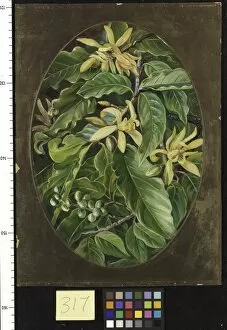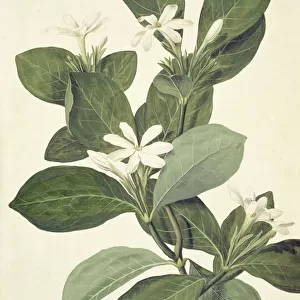Home > Europe > United Kingdom > England > London > Museums > Natural History Museum
Uvaria odorata, ylang-ylang tree
![]()

Wall Art and Photo Gifts from Mary Evans Picture Library
Uvaria odorata, ylang-ylang tree
Illustration from the Botany Library Plate Collection held at the Natural History Museum, London
Mary Evans Picture Library makes available wonderful images created for people to enjoy over the centuries
Media ID 8601101
© Mary Evans Picture Library 2015 - https://copyrighthub.org/s0/hub1/creation/maryevans/MaryEvansPictureID/10704084
Annonaceae Magnoliales Magnoliid Magnoliidae Seed Angiospermae Dicot Dicotyledon Magnoliophyta Ylang Ylang
FEATURES IN THESE COLLECTIONS
> Europe
> United Kingdom
> England
> London
> Museums
> Natural History Museum
> Europe
> United Kingdom
> England
> London
> Towns
> Hither Green
EDITORS COMMENTS
1. Title: Uvaria odorata, the Enchanting Ylang-Ylang Tree: A Botanical Marvel from the Annonaceae Family 2.. This exquisite illustration showcases the captivating beauty of Uvaria odorata, popularly known as the ylang-ylang tree. Belonging to the Annonaceae family, this tropical evergreen tree is a member of the magnoliids, an essential group of flowering plants within the Magnoliophyta division. The ylang-ylang tree is a dicot, characterized by its two seed leaves (cotyledons) and the presence of flowers, making it an angiosperm. Its name, derived from the Tagalog word "ilang-ilang," translates to "wild ilang-ilang," reflecting its native origin in the Philippines and other parts of Southeast Asia. Uvaria odorata is renowned for its alluring, fragrant flowers, which are long-lasting and evoke an intoxicating aroma. These flowers are a key ingredient in perfumes, essential oils, and cosmetics, making the ylang-ylang tree an economically valuable plant. However, this illustration highlights the botanical significance of the tree, focusing on its anatomical structure and intricate details. The tree's leaves are simple, alternately arranged, and can grow up to 15 cm long. Its flowers are large, waxy, and borne in panicles. The tree bears a fleshy, round fruit called a drupe, which contains a single seed. The ylang-ylang tree's seeds are dispersed through the digestive processes of birds and other animals, ensuring its continued growth and propagation. This illustration, taken from the Botany Library Plate Collection held at the Natural History Museum in London, serves as a testament to the rich history of botanical art and the importance of documenting the natural world. The ylang-ylang tree's captivating beauty and botanical significance make it a fascinating subject for study and appreciation.
MADE IN THE UK
Safe Shipping with 30 Day Money Back Guarantee
FREE PERSONALISATION*
We are proud to offer a range of customisation features including Personalised Captions, Color Filters and Picture Zoom Tools
SECURE PAYMENTS
We happily accept a wide range of payment options so you can pay for the things you need in the way that is most convenient for you
* Options may vary by product and licensing agreement. Zoomed Pictures can be adjusted in the Basket.












